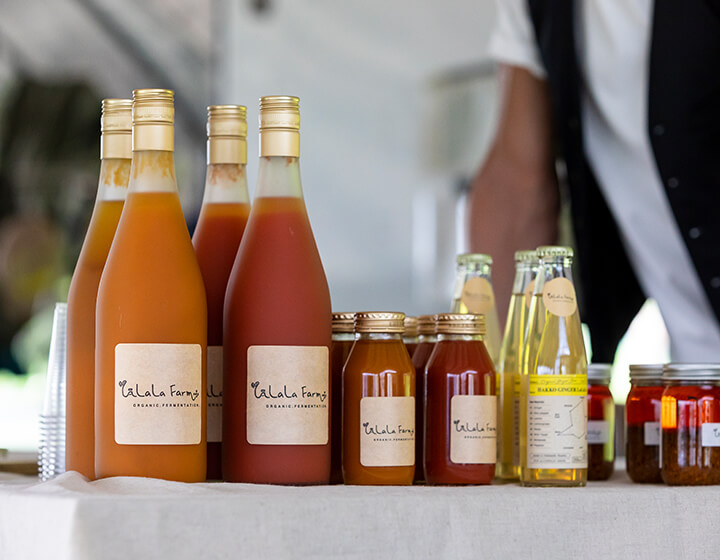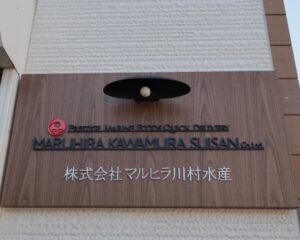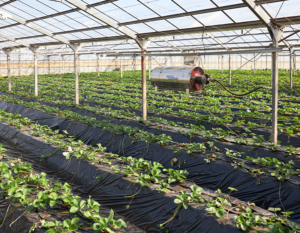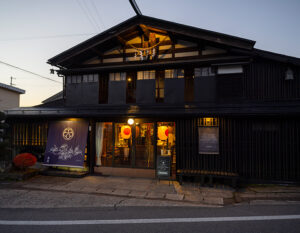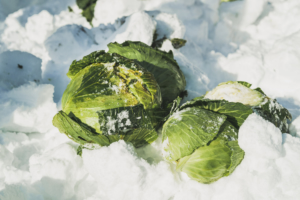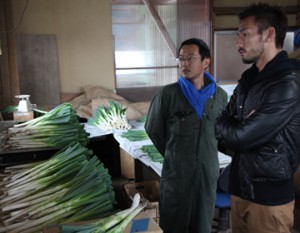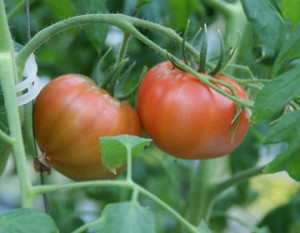The taste is like nothing I’ve ever tasted anywhere else,” said Yoshihiro Hattori, president of LaLaLaFarm. Yoshihiro Hattori, president of LaLaLaFarm, was attracted by the nature of Niseko, which he learned about through his hobby of outdoor activities, and ventured into farming on his own, something he had never done before. After struggling with hardships, he came across “fermentation” and the philosophy behind vegetable farming.
Vegetables are sweeter in Niseko because of the large difference in temperature.

From summer activities to winter sports in winter, Niseko Town in Hokkaido has many tourism resources. As a resort town, Niseko has been attracting people from all over Japan and abroad. Yotei National Park to the east, Niseko Annupuri National Park to the north, and Mount Kombu to the southwest, Niseko is a hilly basin with a mild and comfortable climate from spring to summer, but in winter, snowfall can reach 2 meters due to the monsoon.
In winter, snowfall can reach 2 meters due to the monsoon. The town is fed by numerous clear streams, including the Shiribetsu River, which crosses the town from east to west. Niseko’s diverse climate and rich natural environment have also led to a thriving agricultural industry.
The difference in temperature between day and night, which is unique to the basin climate, brings sweetness to the vegetables. Mr. Hattori, head of LaLaLa Farm, grows extremely sweet tomatoes that take advantage of this climate under organic cultivation (natural cycle cultivation ). In addition to tomatoes, he also grows carrots, potatoes, onions, soybeans, and many other crops.
Producing the one and only “high-sugar” large tomatoes
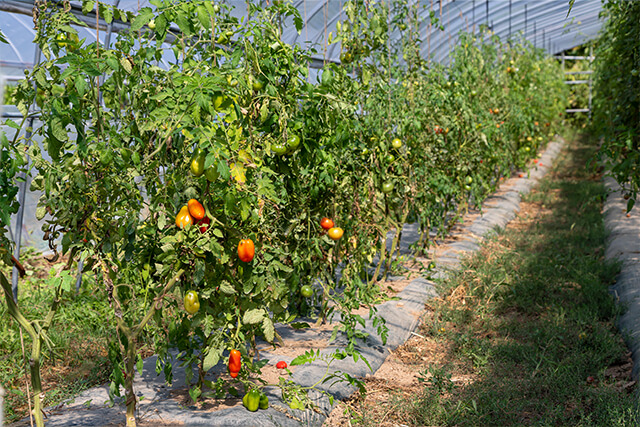
LaLaLa Farm produces eight varieties of tomatoes, including large, original Aloito tomatoes, medium-sized tomatoes, and even miniature varieties. The tomato juice blended with the large tomatoes and other varieties is a gem loved by many for its “just sweetness. The juice is made from fruit tomatoes with a sugar content of 8 to 11 degrees. The sugar content of ordinary tomatoes is 3 to 4 degrees, so it is three times sweeter,” says Hattori.
One known method of producing sweet tomatoes is to reduce water and otherwise stress the tomatoes with water to reduce the inflow of water into the fruit. One such method is to add salt to the soil to make it difficult to absorb water due to osmotic pressure. However, the higher the sugar content, the smaller the fruit itself. This is why most “sweet” fruit tomatoes are medium-sized or miniature varieties.
That is why Representative Hattori insists on “large and sweet” tomatoes. It is a given that miniature tomatoes are sweeter and tastier. I wanted to produce tomatoes that only I could make.”
So he decided to take on the challenge of producing “sweet” tomatoes while keeping the fruit large and without losing any moisture. The key to this was the microorganisms in the soil. I realized that I could increase the number of microorganisms in the soil that were compatible with tomatoes.
When growing tomatoes, it is common practice to replace soil that has been grown once. This means that the microorganisms that had been living in the soil with the tomatoes are all gone. However, the same types of microorganisms are essentially circulating through the soil, feeding on each other. Mr. Hattori said that he felt uncomfortable replacing the soil when good tomatoes were produced.
He therefore turned his attention to the mechanism of “fermentation ” to speed up the soil decomposition cycle, which takes a long time. For tomatoes, we chop up the best tomatoes, leaves, fruits, and roots, dry them, mix them with soil, and ferment them. What would take nature three years to decompose takes only three weeks.”
It turns out that if you increase the number of quality “tomato microorganisms” and put them back in the same place, you can have a continuous crop. They discovered that they could produce large, sweet tomatoes without reducing the amount of water, which was also a prerequisite for producing sweet tomatoes.
Fermentation” is an essential part of LaLaLaFarm’s sweet tomato production that nurtures the rich soil. Mr. Hattori first encountered “fermentation” during his many hard-fought years as a farmer in Hokkaido.
From Nagoya to Niseko to become a farmer by himself
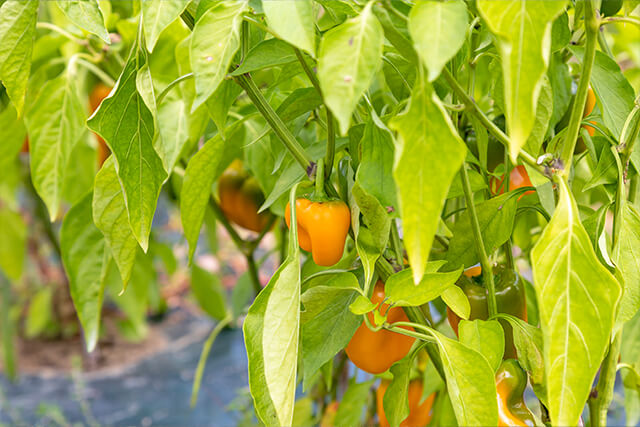
After graduating from university, Mr. Hattori entered the construction industry, the family business. Just before turning 30, he began to feel that he wanted to work in a way that was healthier, more like himself, and more respectful of nature. I wanted to work in a way that was healthier, more true to myself, and more respectful of nature.
The idea came to him from his travels by bicycle and motorcycle in the beautiful and vast landscapes of Hokkaido, and he thought, “Let’s go there first. He began to look for a place where he could study while working, thinking, “Let’s go there first, see and feel it. Niseko is a well-known tourist destination, with many hotels and restaurants, and a good sales channel. Niseko is also easily accessible, being only a two-hour drive from Sapporo and New Chitose Airport. I had visited Niseko in the winter for snowboarding, which I love, and I thought that I could work at the ski slopes and shovel snow from the facilities during the winter when farming is not available.
In fact, after two years of agricultural training in Niseko, Mr. Hattori decided that small-scale facility (plastic greenhouse) farming was a realistic option. He decided to focus mainly on tomatoes, which are widely eaten, and decided to study in Yoichi, where tomato cultivation is thriving. After returning to Niseko, he named his farm “LaLaLa Farm” in the hope of producing vegetables that he would enjoy and that would make the people who eat them say “LaLaLa” unintentionally. He also decided to grow vegetables in an organic way to make everyone happy and to be kind to nature and the environment, which he could not cherish in his previous job.
His interest in organic farming was further deepened when he met Akinori Kimura, who had come to Niseko to teach him before he started farming. Mr. Kimura is known for his “miracle apple” cultivation, which is completely pesticide-free and fertilizer-free, and is a charismatic figure admired by anyone interested in natural farming. Mr. Kimura’s teachings are strict, and I learned firsthand that farming is not so easy that the same methods can be applied to everyone.
However, his words carry weight, and the representative says he has been greatly influenced by them. Mr. Kimura’s words still remain in my mind: ‘The natural world is living in this way even without fertilizers and without cultivation.
Learning Fermentation at a Sake Brewery
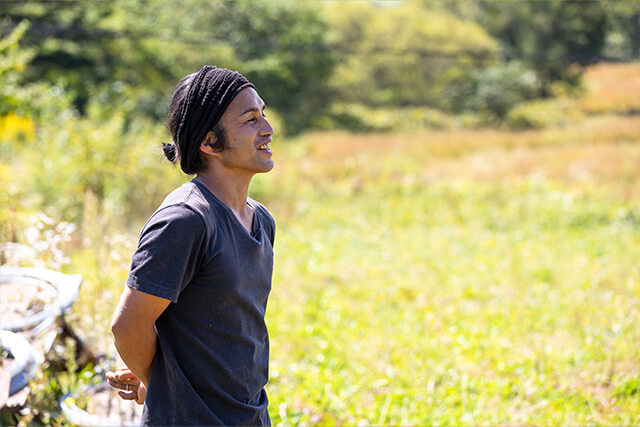
From then on, the road to success was difficult. The harvest did not increase, and for about seven years, they had to continue trial and error. At one point, he was forced to work as a snowboard instructor because it was difficult to make a living as a farmer alone.
He had always been interested in the mechanisms of compost and fermentation, and during the winter season when farming was difficult, he began training as a brewer at the Niseko Brewery in Kutchan Town.
The brewery is located at the foot of Mt. Yotei, and in the winter, the heavy snowfall creates a snow screen that allows for slow, low-temperature fermentation. At the Niseko Brewery, I gained a deep insight into “speed brewing,” in which lactic acid is added to the sake to promote alcoholic fermentation. I was also sent to the Terada Brewery in Chiba, which is known for its natural sake brewing using pesticide- and chemical-free rice such as “Gojin Musume,” and was shown the traditional Kimoto brewing process.
After gaining experience as a brewer, Mr. Hattori began to wonder if he could utilize indigenous or local bacteria in his own farming. For example, miso has its own indigenous bacteria in it and cultivates its own bacteria outside of its own body. We used fermentation to do this in the soil of the fields and tried to reproduce natural conditions,” he says. This will live on greatly in terms of increasing the aforementioned high-quality “tomato microorganisms.
After two or three years of chopping and drying tomatoes at their best, both leaves, fruits, and roots, and mixing them with soil and fermenting them, he finally succeeded in increasing the yield and creating a condition where the sugar content of the tomatoes kept increasing. After 11 years of farming in Hokkaido, this was the moment when Mr. Hattori’s soil preparation finally bore fruit.
Trying to make wine using fermentation technology
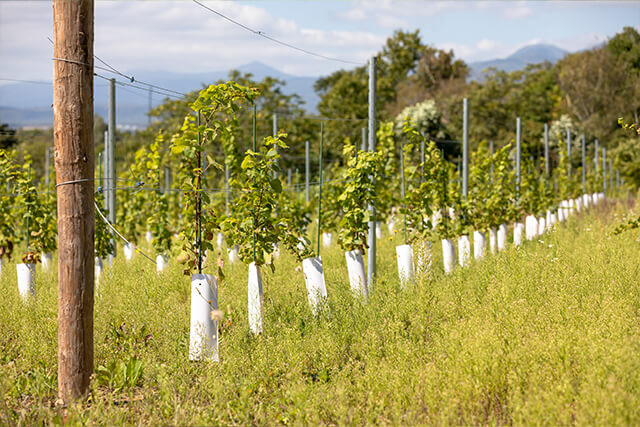
In addition to tomatoes and related products, LaLaLa Farm also ships unique vegetables such asedible hozuki,micro cucumbers, and shallots. Another specialty, “fermented ginger,” is candied ginger that is fermented. Its unique flavor and aroma, which is not found in ordinary ginger ale that is not fermented, is gaining popularity for its “deep flavor. Utilizing the fermentation technology they have cultivated, they also sell miso and amazake made with koji, which are sold at roadside stations, restaurants in Hokkaido and Tokyo, and through mail order. His unique products, such as raayu made with koji, also shine.
Fascinated by the fermentation system, Hattori’s next interest turned to grapes. I was never much of a drinker,” he smiles, “but my desire to ferment grapes led me to drink wine every day. He says he wants to make original wines suited to Niseko’s climate and soil.
I think sparkling wines are best suited to Niseko,” he says. We are growing Chardonnay and Pinot Noir varieties, and this is the third year we are harvesting. We have only planted 1,000 vines, but we would like to try our hand at the volcanic ash soil and see if the tomato method lives up to the challenge.”
Making Everyone Happy with Nature’s Bounty
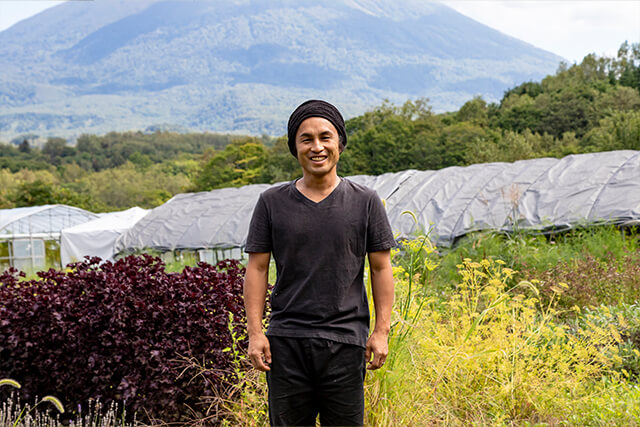
It has been 17 years since he started farming in Niseko, and he now has a family. What is important to him is to make everyone happy and smile with the connections he has made through farming and the products he produces. I would like to make wine from grapes and then open a winery. Eventually, I would like to set up an inn where customers and others can gather and learn about the wonders of fermentation.
What I feel through farming is that nature is a cycle, and fermentation is one of them. Fermentation is one of them. Niseko’s abundant nature is both harsh and gentle. In winter, the snow protects the soil, and we can prepare bacon and dry vegetables and fish to make preserved foods. Not to mention, food tastes great in the summer.”
The next stage for LaLaLaFarm, which makes use of nature’s blessing of fermentation to create unique vegetables, is wine making. Mr. Hattori’s new challenge has just begun.



